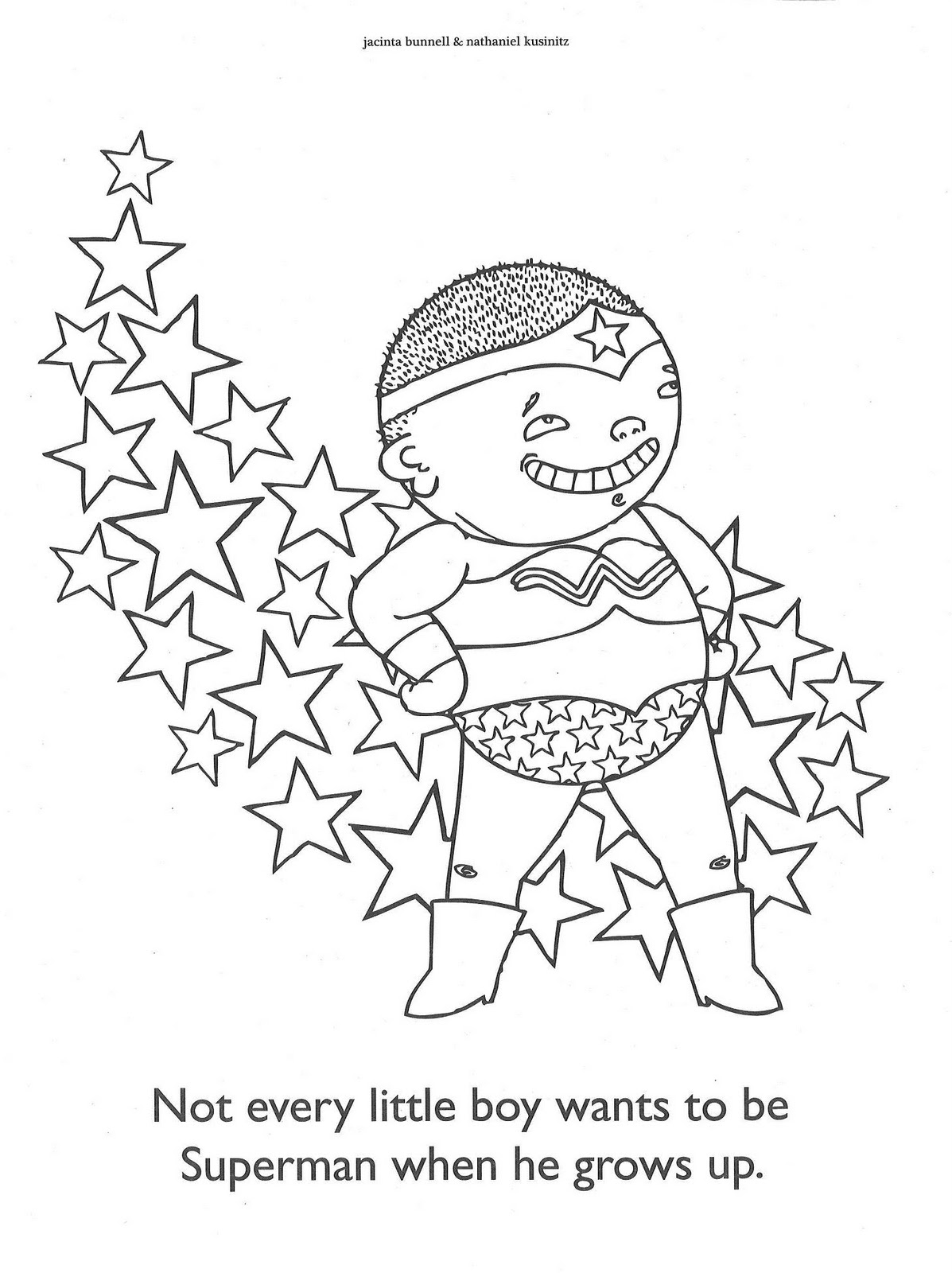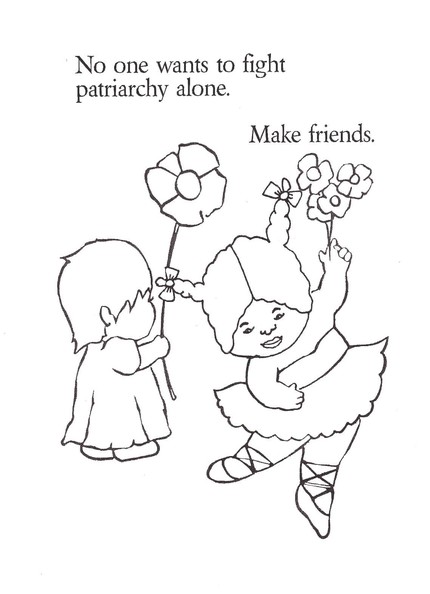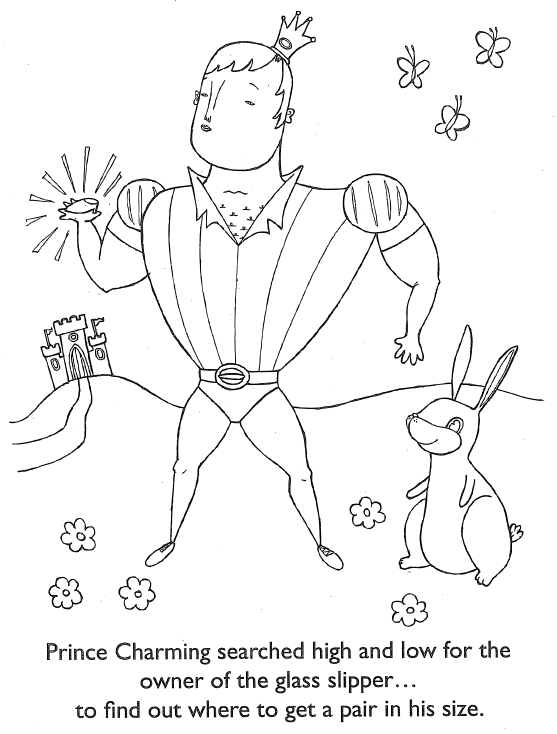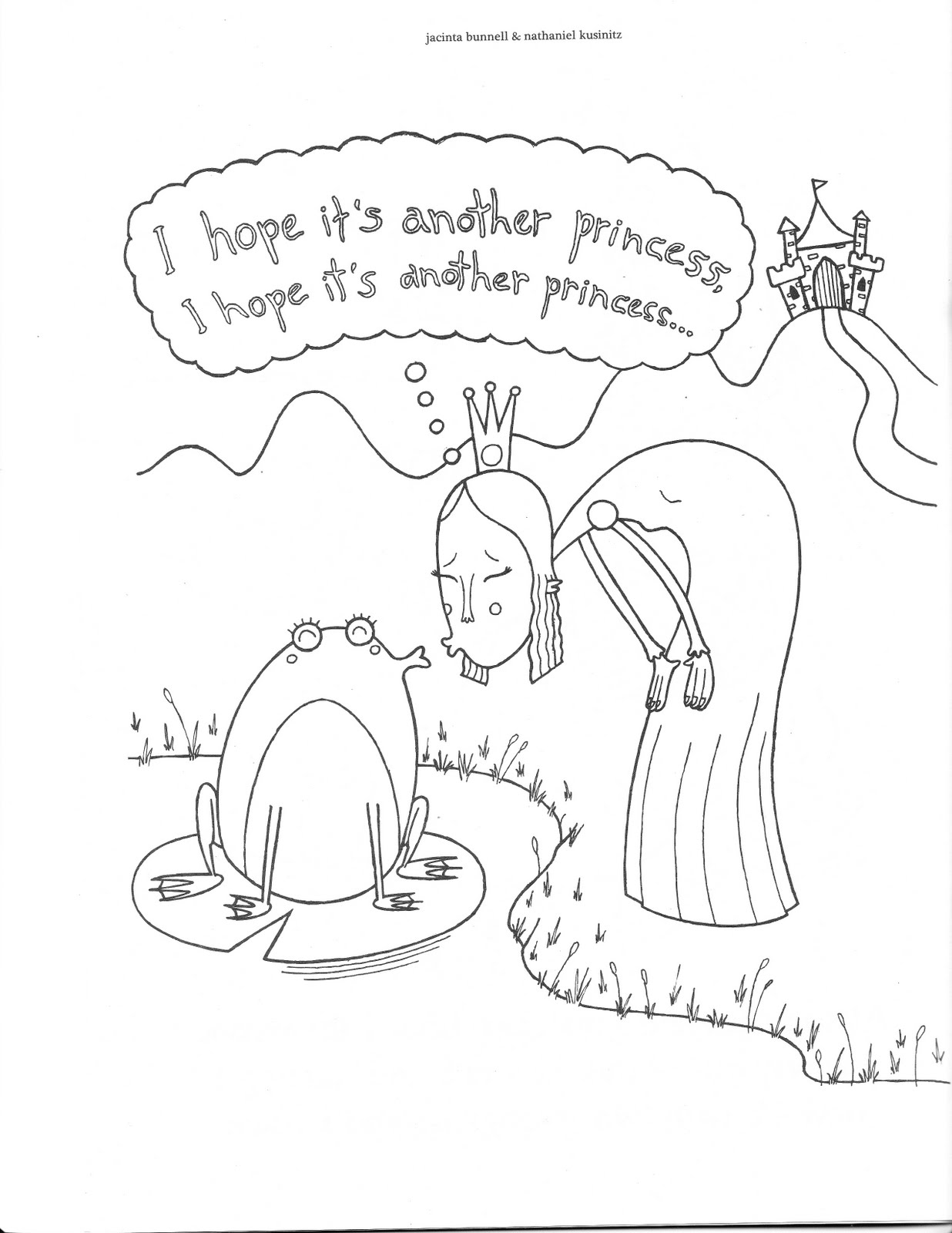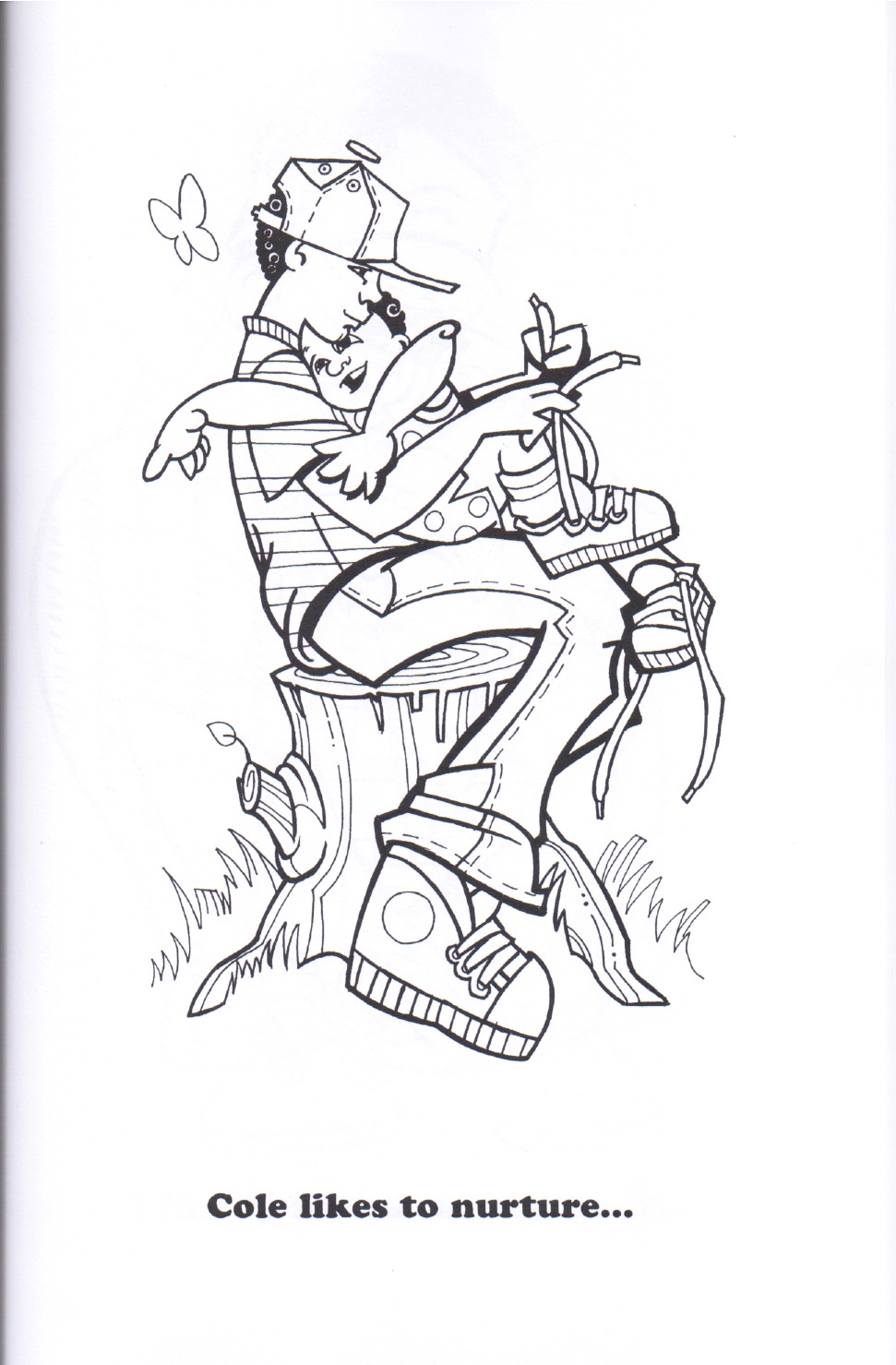Q & A WITH ARTIST AND AUTHOR JACINTA BUNNELL
JACINTA BUNNELL is an artist and author residing in New York’s Hudson Valley. Her collection of coloring books challenge readers to look differently at long-held notions of gender and sexuality in a way that is as skillful as it is lighthearted. While each book takes on a slightly different theme, they all broach seemingly complex subjects with a "kid lens", reminding us that things are not always as serious as we often make them. With two more books on the horizon, take a peek into how these works came to be and with it, a closer look into the delightful world of Jacinta Bunnell.
Your coloring books have a very sweet, kid-centric spirit that is gentle and disarming, but at the same time, push the envelope on our ideas of gender and identity. What was the impetus to create them?
Irit Reinheimer and I were doing childcare at the time we created our first coloring book in 2001. We both would complain to each other about all the books in people’s houses for the kids: the Disney crap, the princesses, the predictable gender roles, the lack of queer and trans people, the hetero-normativity, etc. Separately from that, we had created a list of free things to do in the Hudson Valley for ourselves (kind of like a friendship activity list) and out of the 25 things on the list, one of them was to make a coloring book or calendar that spoke to the lack we saw in children’s literature. We both had spent time studying gender from an academic perspective and as important as it was, we just didn’t talk like that. I have always wanted my books to offer a fresh way for people of any age to take a look at stereotypes and oppression. If you can get people to laugh at themselves and at cultural expectations, their hearts will be more open to looking at difficult issues. Once you have opened someone's heart with a joke, a shared smile or a good laugh, you are better able to do the hard work of liberation together. I want folks to come away with a deeper critique of children's media and the way it introduces strong influences we often take for granted. Though my work directly draws from feminist, queer and transgender scholarship and activism, I try to make it accessible to people of all ages via the familiarity of coloring books. I want to provide media examples of real life: something other than the hyper-masculinity, hyper-femininity and compulsory heterosexuality that the media bombards us with. I want people to be proud of themselves. If you do not see yourself in print anywhere, how do you know you are not the only one that thinks, acts and feels as you do?
How did you go about getting the books published?
After several years of doing all the mailing and invoicing ourselves, Irit and I decided to seek out a publisher so that we could be freed up from the administrative end of things and continue to pursue our own creativity. Right out of the gate, our first book was selling very well to zine distros, catalogs and lefty/women’s/LGBTQ bookstores. We approached a few publishers and heard back from one, Soft Skull Press. They shared our vision and politics so we made the decision to move forward with them. I say this casually now but it was a REALLY BIG DEAL to me then. I had never imagined doing something so official with the projects I had worked on! All my subsequent books have been with PM Press. They are amazing and awesome and have such vision.
Did you get any pushback for addressing these issues in coloring books?
Sure, but nothing too overt. From the beginning, way before this whole adult coloring book craze, I’ve maintained that my books are for adults. If kids relate to them, super. I have always been someone who colors, well past the “acceptable” age-limit.
What’s been your proudest moment surrounding the books?
Occasionally I receive letters from people who have trans, queer or gender fluid children, letting me know that my books help them feel less alone and give them tools to discuss things with family, teachers and friends. It is these letters that make me the most proud. When I read yearly sales reports stating that I have sold thousands of books, I almost can’t digest that. My imposter syndrome kicks into high gear and I have to convince myself that I am the one that made that happen. I think that comes from growing up working class. It is built into working class culture that you don’t talk about your accomplishments for fear of being called a braggart.
When did you first discover you an aptitude towards art? Who or what fostered that interest?
My mom was very expressive with flowers and vegetables in the garden, always put up her own wallpaper and reupholstered our furniture instead of buying something new. My aunt and cousin, who lived next door, were very creative and did a bit of oil painting. My step-dad could build ANYTHING out of wood. At any given time, one of them would either be caning an antique chair, arranging flowers, canning vegetables, building a garage or making beaded Christmas ornaments. No one ever spoke of any of it as art but IT WAS! There was no one around who identified as a working artist so I didn’t even know it was a thing people did. But handmade was the general rule in the homes of my close-knit family growing up. Every pie was from scratch; letters were written with practiced manuscript; and if something broke, you fixed it yourself. There also happened to be a fair share of drinking, drug use, gossiping and arguing all around me, none of which seemed particularly fulfilling to me, so I found my way around that through reading and making things.
Your yearlong art project, Shy as a Shrimp, was inspired by the artwork of children. When the kids who inspired you came to your exhibit and saw how they influenced your art, what kinds of feedback did they offer you?
Mostly they were like, “Yeah, I don’t draw like that anymore, I drew like that when I was three, that’s pretty bad...” I had used older artwork from the children because the art that is the most interesting to me is the art kids make when they are age two to six and just churning stuff out without much thought. Here they were, already passing judgment on their younger selves.
Do you think there’s any correlation between pain and creativity?
I have heard many artists state that much of their creativity is fueled by pain and loss. I’m pretty much the opposite. I just completely stop making things if I am too sad or upset. It took me a year to make a piece of art about losing my home and half of everything in it to a hurricane. When I am feeling content, at peace, rested and fully supported, I am much more creative.
Jacinta's Studio
What did you learn about yourself and others after the devastation that occurred during Hurricane Irene?
I learned that I had an intense, incredible attachment to my STUFF, and that I had placed a lot of weight and comfort on all the pretty things I had collected over the years. With the destruction of much of that, what came in to fill the hole was this enormous outpouring of love and help like I had never known. My closest friends and family came and filled up their trucks with my clothes and washed the mud out, staying up late at the laundromat when they had kids waiting for them at home. They gave me their spare bedrooms for months on end while my partner and I searched for a new home. They donated money so we could replace furniture, electronics, rugs, bedding, books and other important things because our renters’ insurance did not cover flood damage. There are things that I lost that cannot ever be replaced, like my first teddy bear, handmade books and my family photos. I still think about those things often but in the end, you can’t take it with you, right? I honestly think that the less stuff you have to weigh you down, the more you get to connect with other people. We are so distracted by our things.
One of the first things you divulge in your bio is that due to unfortunate weather conditions, you got trapped inside a log cabin for a week with nothing to eat but your mother's fruitcake... tell us more about that.
Jacinta's Mother's fruitcake recipe.
I tell that story partially to be a smart ass. I pretty much roll my eyes at bios, resumes and the like. I like to learn about people through the stories they tell. It happened one winter. My niece Keetin was about 12 and was coming to stay with me for a week. We had just traveled from my mother's house and she loaded us up with homemade spaghetti sauce and fruitcake. I actually LOVE her fruitcake. I have been eating it since I was a baby. We unloaded the car, started a fire in the wood stove and... BAM! A snowstorm started. As was typical for me at the time, I had no idea that a giant snowstorm was about to hit the region. I had no television and lived in the woods. I didn't have 4-wheel drive, so we got stuck in the house for about four days. My niece has always been a terrific companion. She is funny, kind, artistic and very ingenuitive. She had low expectations, was just psyched to be away from her parents for a few days, and she didn't really care that I had no food in the fridge besides fruitcake and tomato sauce! We also had a little pasta that we cooked up, but we were pretty hungry when the snow finally stopped.
What are you working on now?
I just completed a body of work that is a collaboration between me and my step-father, who gives me these score sheets from this game called Thirteen, a rummy card game that was first brought to my family in the 70s from my grandparents’ retirement community in Jensen Beach, Florida. I add color and pattern to the score sheets. My family has played this game nearly every day for decades. It is a social connection for them, they laugh and tease each other, sometimes even fight. Tables have been turned over. I am also the resident artist for Secret City on July 31 at Bearsville Theater and I am dreaming up something for this show. Secret City is such a cool, interesting project and I am highly honored to be asked to be a part of it. I have another two books I am in process on but I don’t always like to talk about them until they are done because they often don't end up quite how I imagined them in the beginning. I hold down several other odd jobs to make money, too. It feels a bit like twirling plates sometimes, but I like the diversity in my day-to-day life. It provides me with great flexibility to live a creative, exciting life.
Jacinta’s coloring books can be found at queerbookcommittee.com. For more information about her past and present art projects, including Shy as a Shrimp and Secret City at Bearsville Theater, visit JacintaBunnell.com.



